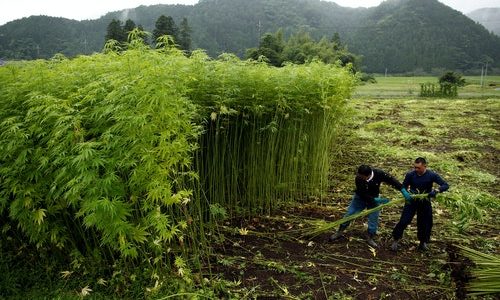The first research into the use of Japanese hemp in textiles was conducted at the Minami Oshihara Experimental Station, a farm in the Tochigi Prefecture. The tops of the hemp plants were cut at one foot, air-dried, and analyzed for narcotic content. Dr. Nishizawa then took the dried hemp tops to Takeda Pharmaceutical Industries, Ltd., in Tokyo. The study was a success and was soon replicated in other countries.
Despite its controversial nature, the cultivation of hemp in Japan has a long history in Japan. During the Shogun periods, hemp cultivation was a staple of the farming community. As such, the Japanese culture was closely linked to the hemp plant, and it was not just an important agricultural crop. Currently, the Japanese government is trying to reintroduce the plant to the population. The museum’s director, Junichi Takayasu, 57, says that he hopes to bring back the use of hemp in the nation.
However, despite the benefits of hemp, the Japanese government has been hesitant to legalize its extensive cultivation. As a result, the government has rarely issued permits to grow hemp. As a result, the process is frustrating for any interested party. It is not surprising that when people ask the Japanese government about the use of hemp, the official response is often blank stares. Nevertheless, the Japanese government has been against the cultivation of hemp for more than 20 years. The legality of hemp was not enforced because of external pressures.
Hemp is now a legal product in Japan. It is also an important part of the country’s health care industry. Cancer patients often seek cannabis for relief from the side effects of chemotherapy. As such, it is important that the harsh laws against marijuana be adjusted to allow its use in medicine. Many Japanese people support the lifting of the ban. So, is it time to let Japanese hemp enter the mainstream? And how can we help it reach the highest levels of popularity?
In Japan, hemp products are available for medicinal purposes. The Japanese government plans to legalize cannabis in a few years. It has already begun experimenting with CBD-based medicines. The government plans to allow cannabis-derived medicines in Japan within five years. In the meantime, it will be possible to cultivate Japanese hemp for recreational use. Although the Japanese government has a lenient attitude toward hemp, it is still not legal in many other countries.
There are many uses for hemp in Japan. It is grown as a fiber for textiles and is even sold as a fabric. The word for hemp is ‘taima’, derived from the ancient Chinese character for ‘to rub.’ This word has several connotations and is the most common word for hemp in the world. Among other uses for hemp, it’s used for a range of purposes, including medical applications and food products.
In rural Shimane Prefecture, the use of hemp is illegal. The Japanese government’s stance on hemp is unpopular in the country, but this isn’t a reason to abandon the crop. In fact, the hemp industry in Japan is thriving despite the fact that it is far from the urban centers. The government’s ban on the plant is an important step in promoting a healthier lifestyle for the entire nation.
As a farm product, hemp has been grown in Japan for thousands of years. The neolithic Jomon period, which is named after the Jomon people, referred to the pattern of ropes. This ancient people cultivated hemp for weaving and other uses, and evidence of hemp’s cultivation has been found on Kyushu and in other parts of Japan. The plant was originally imported from China around 300 BC, but the trade routes between Japan and China were not very well developed.
In 1950, the daimyo encouraged hemp cultivation in Tochigi Prefecture. They wanted hemp to be popular because it would increase their economic strength. It was popular with wealthy merchants in the city, and daimyo were often in debt to these merchants. This made the merchants the richest class, and the number of hemp farmers decreased dramatically. In the 1960s, there were 37,300 Japanese producers of the plant, which led to the country’s ban on marijuana and its use in the textile industry.

